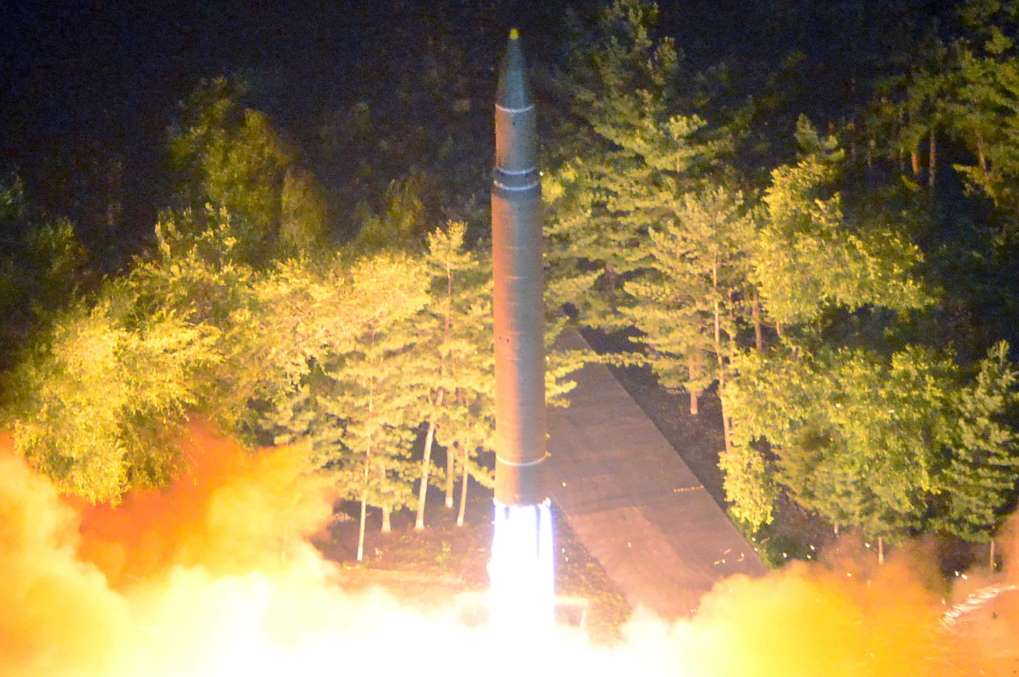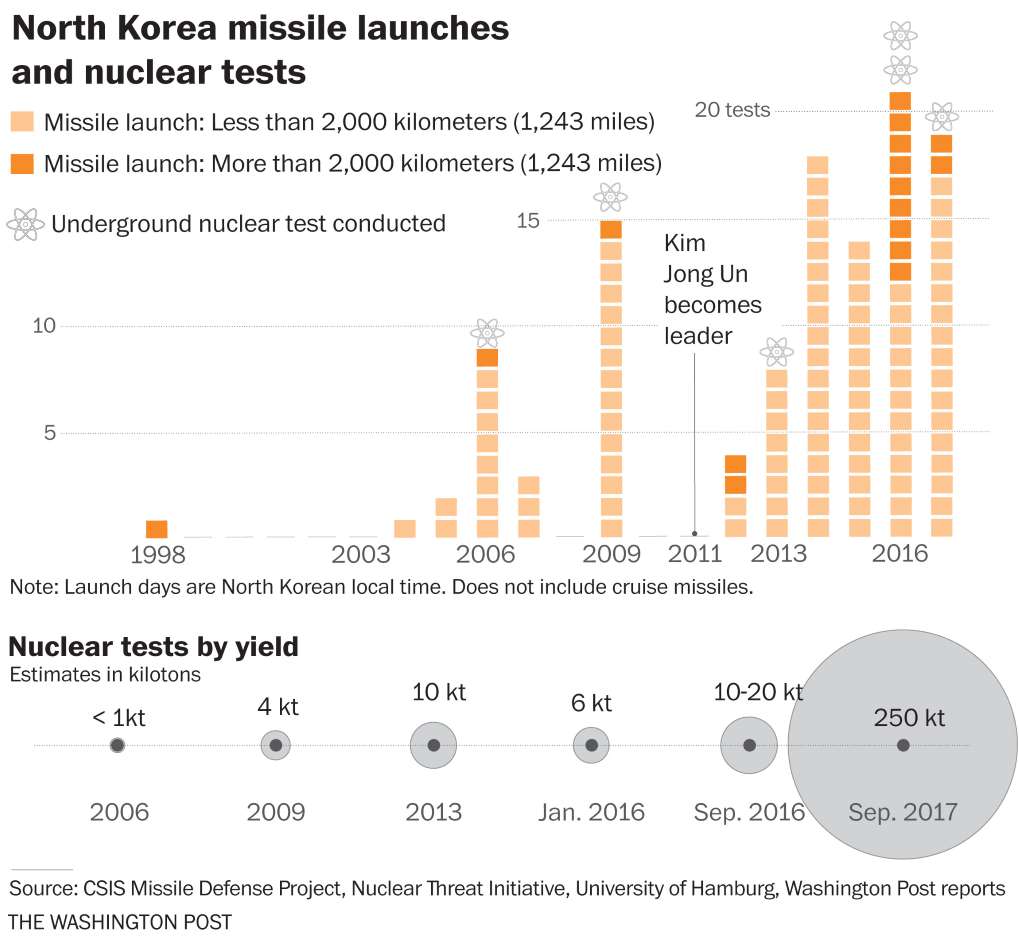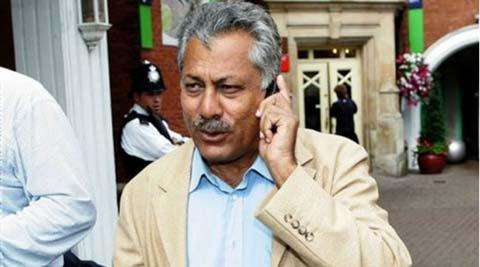September 14, 2017
SEOUL — North Korea fired another missile over the northern Japanese island of Hokkaido on Friday morning, just a day after Pyongyang threatened that the four main Japanese islands “should be sunken into the sea” by its nuclear bomb.

September 14, 2017
SEOUL — North Korea fired another missile over the northern Japanese island of Hokkaido on Friday morning, just a day after Pyongyang threatened that the four main Japanese islands “should be sunken into the sea” by its nuclear bomb.

A photo made available by the North Korean Central News Agency shows the second test-fire of Hwasong-14 intercontinental ballistic missile at an undisclosed location in North Korea on July 28, 2017. Multiple media reported Friday, Sept. 15, 2017, that North Korea has launched another unidentified missile and that it has passed over Japan. – Kcna/EPA-EFE
This was the second time in less than three weeks that North Korea sent a projectile over Japan, and the missile firing immediately sparked angry reactions in Tokyo and Seoul.
The missile was launched from the Sunan airfield just north of Pyongyang about 6:30 a.m. local time, South Korea’s Joint Chiefs of Staff said. It flew for 17 minutes, passing over Hokkaido and landing some 1,200 miles to the east in the Pacific Ocean.
The launch immediately triggered emergency alerts in Japan, with text messages and loud speakers telling residents along the missile’s potential flight path to seek shelter.
The Japanese government warned people not to approach any debris or other suspicious-looking material, a reflection of the fact that North Korean missiles sometimes break up in flight.
Japan’s chief cabinet secretary, Yoshihide Suga, condemned the latest launch and reiterated that Japan would “not tolerate” North Korea’s actions. Prime Minister Shinzo Abe had asked his government to “prepare for any contingency,” but Japan did not try to shoot down the missile.
In Washington, the White House said President Trump was briefed on the latest North Korean missile launch by his chief of staff, John F. Kelly.
Details were still emerging, but Friday’s launch appeared similar to the previous launch, on Aug. 29.
On that day, North Korea fired a Hwasong-12 — an intermediate-range ballistic missile technically capable of flying 3,000 miles, enough to reach the U.S. territory of Guam — from the Sunan airfield. It flew to the east, over Hokkaido and into the Pacific Ocean, rather than on a southward path toward Guam.
But analysts said that, after testing its missiles by firing them straight up and having them crash into the sea between the Korean Peninsula and Japan, North Korea was apparently testing its flight on a normal trajectory without crossing a “red line” of aiming at the United States.
On Thursday, a North Korean state agency had issued an alarming threat to Japan. “The four islands of the [Japanese] archipelago should be sunken into the sea by [our] nuclear bomb,” the Korea Asia-Pacific Peace Committee said in a statement carried by the official news agency.
Hokkaido is the northernmost of Japan’s four main islands.
“Japan is no longer needed to exist near us,” the committee said.

This is the first missile launch since North Korea conducted a huge nuclear test Sept. 3, which analysts say appeared to live up to Pyongyang’s claim that it was a hydrogen bomb, exponentially more powerful than a normal atomic device.
The Aug. 29 missile launch, followed by the huge nuclear test, triggered tough new sanctions from the U.N. Security Council.
The Japanese government estimates that the force of that nuclear explosion was 160 kilotons — more than 10 times the size of the bomb dropped on Hiroshima — but some analysts have said its yield could have been as much as 250 kilotons.
U.S. Defense Secretary Jim Mattis, traveling from Washington to view U.S. nuclear weapons at Minot Air Force Base, N.D., said Wednesday that the North Korean nuclear test appeared to be “100 kilotons or more.”
“I don’t want to talk any further than that right now, okay?” Mattis said. “It’s a large one.”
Air Force Gen. John Hyten, the chief of U.S. Strategic Command, agreed with the assessment that North Korea had probably tested a hydrogen bomb.
Speaking just before the missile was launched, Hyten, who oversees U.S. nuclear forces and monitors North Korea, told reporters that the size, yield and other indications seen in North Korea’s most recent nuclear test “equates to a hydrogen bomb” and that he must now assume Pyongyang can build one.
He said he could not confirm that a hydrogen bomb was tested but said the test was significant “because of the sheer destruction and damage you can use and create with a weapon of that size.”
“The change from the original atomic bomb to the hydrogen [bomb] changed our entire deterrent relationship with the Soviet Union,” Hyten said. “It is significantly of concern not just to Strategic Command but to everybody in the free world. It should be of concern to people in the neighborhood, which is Japan and Korea, as well as China and Russia.”
Hyten said that if North Korea can mount a bomb of that power on a missile, it could potentially destroy a city. The United States has the ability to deter a nuclear attack on itself or its allies because of the nuclear weapons it maintains, Hyten said, but it’s a “different question” whether the United States can stop North Korea from building them.
Hyten said that the United States still has not seen North Korea “put everything together” with a nuclear warhead mounted on an intercontinental ballistic missile but that it is only a matter of time before the North Koreans do so.
“Whether they have the ability, I don’t have any insight into that,” Hyten said. “I can just look at historic examples and say that it could be within months or it could be within years.”
Courtesy/Source: Washington Post















































































































